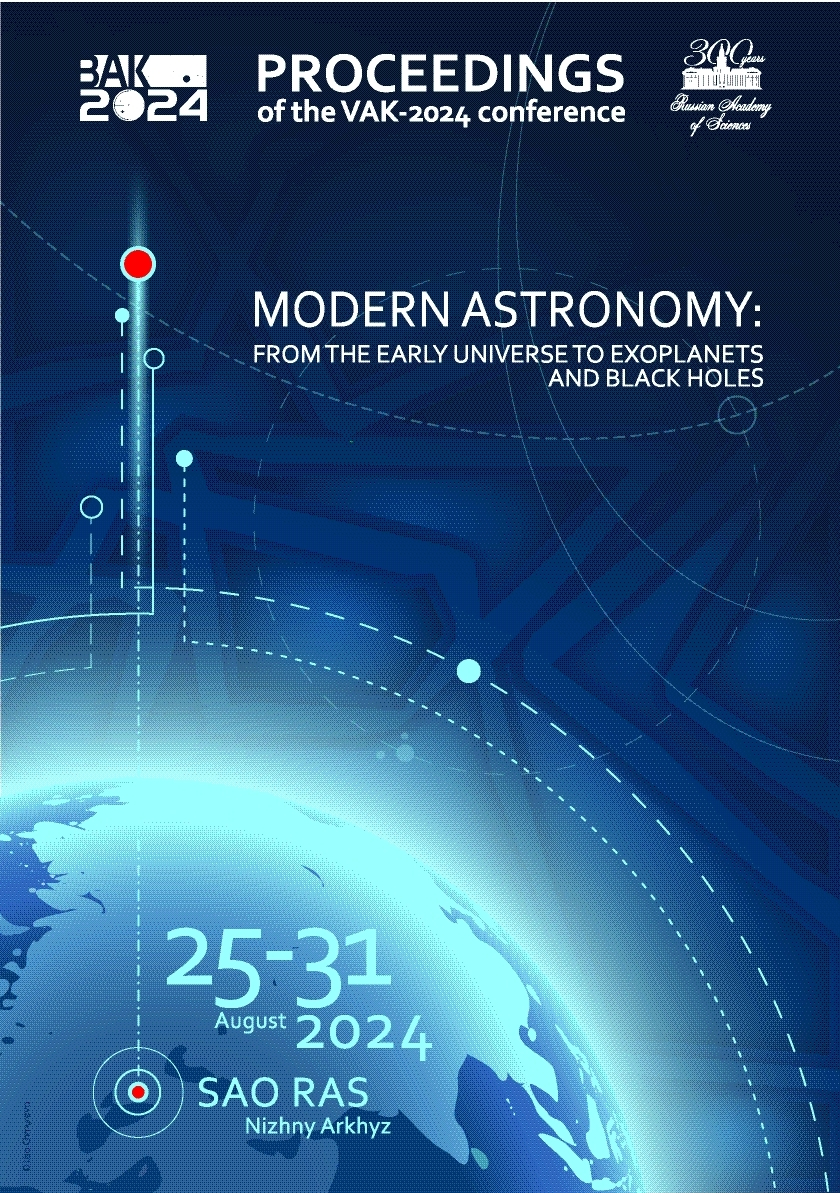UDC 53
UDC 520
UDC 521
UDC 523
UDC 524
UDC 52-1
UDC 52-6
CSCSTI 41.00
CSCSTI 29.35
CSCSTI 29.31
CSCSTI 29.33
CSCSTI 29.27
CSCSTI 29.05
Russian Classification of Professions by Education 03.06.01
Russian Classification of Professions by Education 03.05.01
Russian Classification of Professions by Education 03.04.03
Russian Library and Bibliographic Classification 2
Russian Library and Bibliographic Classification 223
Russian Trade and Bibliographic Classification 614
Russian Trade and Bibliographic Classification 6135
BISAC SCI004000 Astronomy
BISAC SCI005000 Physics / Astrophysics
We present the results of testing machine learning methods for the recognition of solar flares observed in the microwave range. The catalogue of observations by the Nobeyama spectropolarimeters (NoRP) was used for both training and analysis of method effectiveness. The input data are one-dimensional temporal profiles with a frequency of 9.4 GHz, which are mostly associated with the emission of an optically thin source and the non-thermal emission from accelerated electrons. The input dataset consisted of 100 events and included temporal profiles with simple and complex structures. The aim of recognition is to distinguish between the temporal profiles of ``classical'' or simple-looking shapes, and ``complex'' ones. We compared the classification results provided by the correlation coefficient application with the results obtained using the Support Vector Machine (SVM) method with different parameters. True Positive (TP) and True Negative (TN) are values describing the number of events which the model correctly recognized, in our case, ``classical'' and ``complex'' profiles. False Postive (FP) and False Negative (FN) indicate incorrect model predictions of ``classical'' or ``complex'' profiles. The number of correctly recognized events using the correlation coefficient method was 75, compared to 90 events obtained using the SVM method. The number of false predicted events resulting from the application of the correlation coefficient was 25, versus 10 by SVM application. These results indicate the advantage of the SVM technique over the correlation coefficient approach. The SVM method allows us to process datasets using different functions as kernels - linear, polynomial and Radial Basis Function (RBF). In our study, we found that the most accurate result was provided by the RBF kernel with a gamma hyperparameter of 1.
Sun: solar flare, radio radiation; methods: data analysis
1. Asensio Ramos A., Cheung M.C.M., Chifu I., et al., 2023, Living Reviews in Solar Physics, 20, 1, id. 4
2. Davenport J.R.A., Hawley S.L., Hebb L., et al., 2014, Astrophysical Journal, 797, 2, id. 122
3. Torii C., Tsukiji Y., Kobayashi S., et al., 1979, Proceedings of the Research Institute of Atmospherics, Nagoya University, 26, p. 129
4. Wang Y.H., Feng S.W., Du Q.F., et al., 2024, Solar Physics, 299, 4, id. 54
5. Xu L., Yan Y.-H., Yu X.-X., et al., 2019, Research in Astronomy and Astrophysics, 19, 9, id. 135






